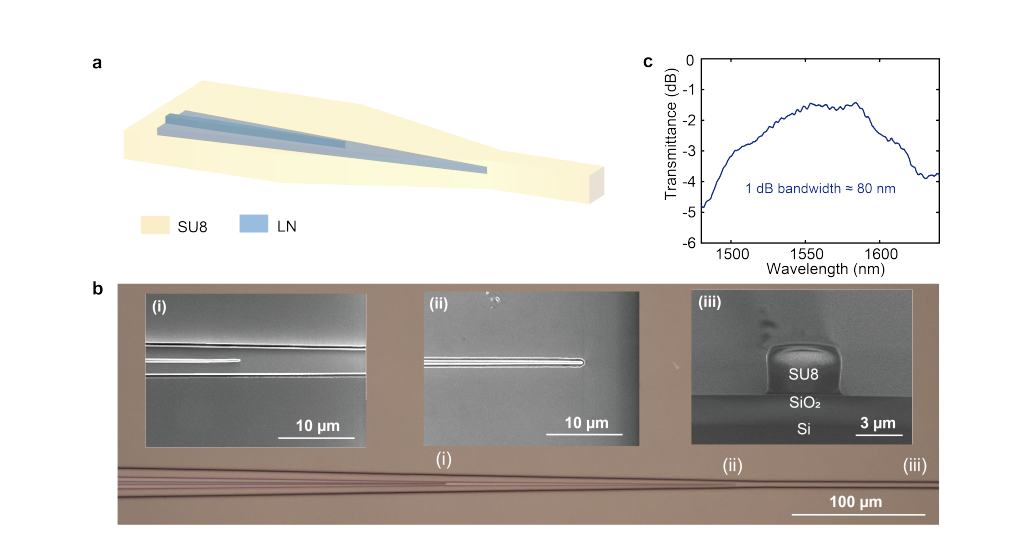
This paper discusses the generation of squeezed light in periodically poled thin-film lithium niobate (PPLN) waveguides, which is crucial for quantum-enhanced sensing and continuous-variable quantum information processing. The work presents a chip-scale platform that integrates high-performance PPLN waveguides and low-loss coupling structures for efficient squeezed light generation at telecommunication wavelengths.
Key findings include:
On-Chip Squeezing Performance: The device demonstrated a measured squeezing level of 1.4 dB under continuous-wave (CW) pumping with a total homodyne detection loss of 3.9 dB. This result is among the highest reported on the thin-film lithium niobate (TFLN) platform. Additionally, when a more efficient PPLN waveguide was used, the inferred squeezing level exceeded 12 dB at a pump power of 62 mW.
Integrated Design and Coupling: The PPLN nanophotonic waveguides were integrated with low-loss edge couplers, featuring bilayer inverse tapers and SU-8 polymer waveguides. These structures resulted in a fiber-to-chip coupling loss of only 1.5 dB, ensuring efficient coupling of the squeezed light from the chip to external fibers.
Waveguide and Fabrication: The waveguides were fabricated using electron-beam lithography, inductively coupled plasma reactive ion etching (ICP-RIE), and plasma-enhanced chemical vapor deposition (PECVD). The PPLN waveguides were periodically poled to achieve type-0 phase matching, which is essential for efficient squeezed light generation.
Squeezing and Anti-Squeezing: The squeezed light generation was characterized using homodyne detection, with the observed squeezing and anti-squeezing levels plotted against pump power. The results showed that the device could achieve a squeezing level of 1.4 dB at a pump power of 38 mW, which corresponds to about 5 dB of on-chip squeezing.
Noise Reduction: The study also investigated noise contributions from the system, including the effects of pump filtering, coupling losses, and detector losses. It was found that the PPLN waveguide significantly suppressed nonlinear noise, providing a high-quality squeezing source for quantum applications.
Potential for Quantum Applications: This work highlights the potential of the TFLN platform for realizing efficient, scalable squeezed light sources. These devices are critical for continuous-variable quantum information processing, including quantum sensing, quantum computing, and quantum communications.
In conclusion, this work demonstrates the feasibility of generating high-quality squeezed light in integrated PPLN waveguides, with promising results for future quantum photonic systems, particularly in scalable and compact chip-scale platforms.
OMeda (Shanghai Omedasemi Co.,Ltd) was founded in 2021 by 3 doctors with more than 10 years of experience in nanpfabrication. It currently has 15 employees and has rich experience in nanofabrication (coating, lithography, etching, two-photon printing, bonding) and other processes. We support nanofabrication of 4/6/8-inch wafers.